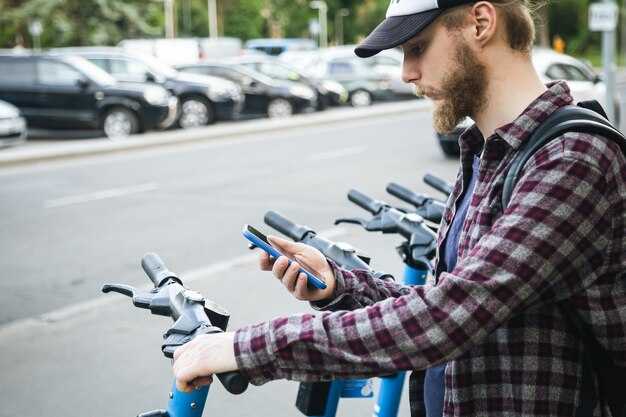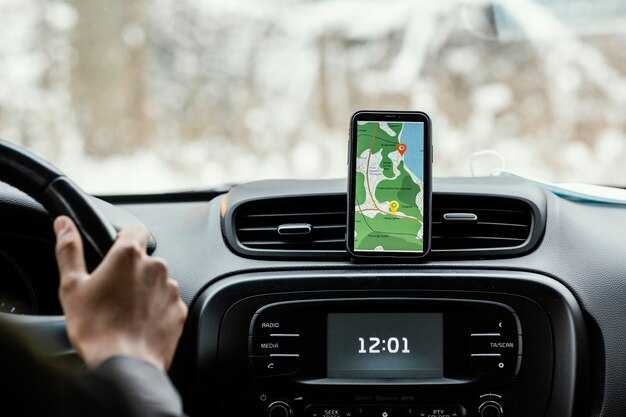Start with Uber as your default in London. It covers most areas, offers reliable ETAs, and supports cashless payments across channels. It does integrate with major card networks. For accessibility, use the app’s filters to request wheelchairs-compatible options if needed, and you’ll see live-driver availability down to your postcode. This standard option makes it easy to move around central hubs like Victoria, Liverpool Street, and Canary Wharf with minimal fuss.
Bolt shines on price transparency and quick pickups in busy zones. Its comparative pricing tends to be lower on short trips than Uber, and the app emphasizes straightforward, cashless payments. If you move between neighborhoods–Covent Garden to Paddington, for example–you’ll often see shorter wait times and clear ETA estimates. Bolt also offers a variety of ride types at a base rate that appeals to budget-minded travelers.
Free Now combines taxi-style options with standard rides and can cater to mixed needs. It has broad coverage and useful safety channels for help. Whether you prefer a traditional taxi experience or a rideshare, Free Now can offer price alerts and flexible pickup options to suit your plans. The app supports cashless payments and provides clear, real-time pricing for each trip.
Accessibility and safety are consistent priorities across the major players. In the last year, all three services expanded driver verification and in-app safety reporting through channels, with filters to locate accessible rides and options when necessary. If you rely on wheelchair needs, check that the chosen app supports the needed features in your area; availability can differ by borough and time of day.
Keep three apps installed and compare prices before each trip to choose the fastest route or the cheapest option. When you plan ahead, you can rely on a mix of standard, accessible, and premium rides to suit your needs, whether you’re commuting to work or meeting friends in a new part of town. This strategy helps you stay flexible across the London base of districts and events.
Coverage and Availability Across London

Start with Uber for the widest coverage across London, making it the first choice for most riders. The app boasts a large driver network across central and outer boroughs, a standard set of ride options, and real-time updates on driver location and ETA. For a single trip, you’ll usually see quick waits and predictable pricing, with in-app routing helping you keep the schedule on track.
Coverage Strength Across Boroughs
Across London, Uber remains strongest in central zones, while Bolt fills gaps over outer areas and residential districts. Bolt often offers the cheapest options in many outer boroughs, with real-time status and transparent pricing. In busy periods, wait times are similar to Uber, and the app supports straightforward transfer options if you need to switch to another service mid-trip. Though the landscape shifts by neighborhood, the overall coverage stays robust.
Practical Considerations and Multi-Modal Options
Free Now adds versatility by combining taxi and private-hire options in one app, which helps you manage transfers across modes when schedules collide with rail or bus services. The policy for payments and rider safety is clearly laid out in the app, and you can switch payment methods or book ahead where supported, making city travel more flexible.
In central and outer districts alike, you’ll see driver states such as pathing, en route, and waiting, expressed in the real-time status banners. This visibility helps you decide which ride to order, balancing cost, wait, and comfort. Waiting times can vary over the day; plan for shorter waits during late mornings and early evenings and longer ones in peak commute windows. The experience remains solid though you should check faqs before your first ride.
Riders frequently ask how coverage varies by borough and which app offers the best market value for a given route. These apps operate in many countries, which helps ensure a consistent experience as you move beyond London. Together, the real-time data and broad coverage make it easy to keep journeys moving, even when plans change.
Core Features and User Experience: How Apps Differ
Choose the platform that shows transparent policy and reliable earnings estimates first, then compare dispatch speed and ride quality for your area.
Booking flow is a key differentiator. In London, you want a convenient path from home or station to the door, with residential pickups and clear options for adding stops. The best apps show upfront trip estimates, offer multiple payment methods including paying with cards or wallets, and deliver a reliable dispatch that quickly assigns the nearest vetted driver. They display licencing status and transparent policy details, so londoners know what protects them. They also hint at environmental choices, offering EV or hybrid options and a simple way to compare stay-in-vehicle time and emissions. Having these elements in one place boosts trust and keeps you moving toward your perfect ride. Innovation features like in-app safety checks and smart routing differentiate the options, while standard safety practices give extra reassurance, and the interface allows you to book quickly, allowing seamless transitions from search to trip.
Booking and Dispatch Differences
In practice, some apps optimize for the fastest match by dispatching immediately, others let you queue preferences and drivers. This affects total time to trip, the distance covered by the driver, and the potential earnings for drivers; for riders, it affects wait time and price accuracy. The best option shows real-time ETA and updated route options, reducing wasted space and unnecessary detours. It should also support in-app messaging, and show a live map with clear turn-by-turn progress. Whether you ride in central London or a residential suburb, accuracy matters more than flashy visuals.
User Experience and Safety in London
Safety features and clarity on licencing drive trust for londoners. The app should offer ride-sharing controls, live trip sharing, and a clearly displayed policy with typical conditions for cancellations and refunds. In London, congestion zones and residential rules shape pricing and pickup space conditions, so the best apps adapt to these conditions with flexible dispatch and accurate ETA. A tidy in-app space for notes or special instructions helps, as does a smooth chat or call function for drivers, enabling you to address issues quickly. Clear receipts and paying options improve post-ride life, especially when you want to track earnings or chargebacks for work trips. This applies in any condition.
To decide, test two apps on your routine routes and compare ETA accuracy, price estimates, and driver quality. Look for more options that align with your policy and licencing. If you rely on trips for earnings, track the potential to earn per hour after fees and choose the platform with the most convenient dispatch in your area. Consider whether you value environmental choices, residential pickup reliability, and consistent paying methods. The best pick combines reliable dispatch, transparent policy, and a pleasant user experience that fits your life in London.
Pricing: Fare Estimates, Surge and Fees
Always check fare estimates before you order; surge can push a simple trip across central London into a much higher cost, especially along busy lanes during turbulent rush hours. Compare options in-app and pick the most reliable estimate to protect your budget and your overall experience.
Fare estimates you can trust
- Base fare: £1.50–£2.50 for most London rides, plus distance and time charges.
- Per-mile charge: £0.80–£2.00 depending on service level.
- Per-minute charge: £0.15–£0.40; longer trips in traffic rise quickly.
- Booking fee: £0.50–£1.50 added to every trip to cover processing.
- Minimum fare: £2.50–£6.00; short hops still hit the minimum.
- Surge multiplier: 1.5x–3x during demand spikes; plan journeys to avoid peaks.
- Cancellation fee: varies by app, commonly £1–£5 if you cancel after a grace period.
- Tolls and charges: congestion charge in central London and tolls may apply to your trip.
- Premium and executive options: higher priced but offer more comfort, reliability and exclusivity.
- Airport pickups: some trips incur a small airport fee or surcharge.
Surge and how to manage costs
- Surge is triggered when demand outstrips supply in a lane; you’ll see a multiplier before you order.
- 시간과 장소: 저녁 5–7 pm과 주말 밤은 가격 변동의 전형적인 혼란 기간입니다.
- 지리: 중앙 지역과 공항은 종종 가장 높은 배율을 가지며; 교외는 더 저렴하지만 이용 가능성이 적습니다.
- 대안 전략: 몇 분 기다리거나, 더 나은 가치를 제공하는 다른 서비스 수준으로 전환하세요.
- 신뢰성과 안전성: 여성 여행자를 포함한 승객들은 더 높은 등급의 운전자나 추가 공간과 보안 기능을 갖춘 차량을 선호할 수 있습니다; 가격은 그 신뢰성을 반영합니다.
- 전체 보기: 주문 전에 모든 것을 확인할 수 있으며, 서지 요금 및 추가 요금을 포함하여 빠르게 결정할 수 있습니다.
여행 비용을 필요에 맞게 조정하는 팁:
- Explore various ride types to balance cost and comfort; tailored options help fit your needs.
- Use tailored price estimates for different routes and times; choose different options depending on risk and value.
- Executive or premium options deliver more comfort and reliability, which can justify higher prices for important trips.
- Always check everything before you order: surge, tolls, congestion charges, and the final fare so you know what you’ll pay.
- For longer trips across multiple lanes, getaround savings by timing or splitting fares where supported.
Everything you need to know about pricing is in the app: you’ll see the estimate, the current surge multiplier, and any extra charges before you order, so you can decide quickly and maintain reliability for your trip across London’s turbulent traffic. By comparing various options, you improve your getaround efficiency and keep rides affordable while still getting the inside track on an executive experience when you want it. This approach suits riders with different needs, from quick hops across central zones to longer journeys through busy corridors with multiple tolls and congested lanes.
Safety and Verification: Driver Checks and Ride Quality
Always verify the driver profile and vehicle details before booking, and choose a metered option from a trusted fleet to ensure safer trips and transparent pricing.
Riders can ride with confidence without hidden fees thanks to metered pricing and transparent surge rules.
Driver Checks and Verification
The pillars of safety start with licence validation, identity checks, and ongoing driver monitoring to protect riders on london streets. Location data helps confirm pickup reliability, while the fleet completes rigorous onboarding. Vehicles undergo pre-ride inspections for seat belts, lights, brakes, and meter accuracy, and all drivers pass background checks before joining. Regular re-checks every 6–12 months close gaps in compliance and sustain high standards.
Ride Quality, Vehicle Standards and Rider Experience
Riders benefit from newer cars or tailored options for groups, with metered pricing that shields users from surge spikes. For larger groups, minibus options are clearly shown alongside standard cars. The fleet prioritizes greener vehicles where possible, reducing emissions on london streets and supporting the environment. Innovation in safety features, such as in-app SOS and live driver ratings, supports providing safe rides from home or on location, while clear feedback channels drive continuous improvement.
| 측면 | Recommended Practice | Rider Benefit | 참고 |
|---|---|---|---|
| Driver verification | Licence validation, identity match, DVLA checks, and ongoing monitoring | Lower risk of unsafe trips | Re-check every 6–12 months |
| Vehicle standards | Pre-ride safety check, functioning seat belts, operational metered system, secure doors | Safer, reliable rides | Fleet-wide minimum standards |
| Pricing and surge | Metered pricing with transparent surge rules; pre-booking encouraged | Fair value for riders | Surge varies with demand |
| Rider feedback | Continuous rating system and periodic driver checks | Higher service quality | Positive feedback drives improvements |
| Environment and alternatives | Greener fleets; alternatives like walking or transit when suitable | Lower emissions, better air quality | Supports london environment goals |
Payment Options and In-App Extras
Set up a licenced card on file and enable Apple Pay or Google Pay for a fast, reliable checkout on every ride, across the ubers network. Keep life moving on busy days by using a primary method and a backup option to avoid failures, while choosing environmentally friendly options such as hybrid or electric fleets when available, which stands out for daily mobility.
Payment options you should enable
- Primary card on file (Visa/Mastercard) via a licenced gateway, kept up to date for instant charges on the curb.
- Apple Pay or Google Pay for quick taps, often faster than entering card details at the driver’s window.
- In-app wallets or stored payments where supported, to minimise card failing at pick-up.
- Corporate or family accounts for multiple riders, with clear receipts and per-ride controls.
- Cashless payments as standard in London; check faqs for city-specific options and which methods are supported by each operator.
- Downside: surge pricing on peak demand days can raise costs, and card payments may fail if your issuer flags the transaction.
- If you are searching for the most suitable option, review the operator’s payment methods in the FAQs and switch quickly if needed.
In-app extras and safety
- Background checks on drivers and licenced vehicles; review the driver profile, car details, and ratings before you ride.
- Environmentally friendly choices include selecting hybrid or electric cars when the network offers them, helping your daily mobility reduce emissions.
- Family friendly options like child seats and quiet rides; choose a suitable setup when travelling with children.
- Premium rides and larger cars stand out for comfort on longer trips or with luggage.
- Ride sharing and fare splitting can lower costs when travelling with friends; confirm availability in your area.
- Multi-stop journeys are supported in many apps; list all stops at booking to keep the ride efficient.
- In-app safety features include trip sharing, driver details, in-app messaging, and an emergency button; FAQs explain usage steps.
- Accessibility and driver notes, including wheelchair access or other needs, are offered by some minicab networks.
Accessibility and Ride Options for All Users
먼저 차량 호출 앱에서 접근성 필터를 활성화하고 휠체어 접근 가능 차량 또는 기타 보조 옵션을 제공하는 시스템을 선택하세요. 런던 및 다른 도시에서는 현재 대부분의 서비스가 앱 내 접근성 플래그 통합을 제공하므로 예약하기 전에 WAV 또는 개조된 차량을 확인할 수 있습니다. 이는 이동성 요구 사항이 있는 탑승자의 삶을 단순화하고 대기 시간을 줄입니다.
먼저, Uber, Bolt, Ola와 파트너 택시 회사들이 지역 차량과 어떻게 통합되는지 앱을 비교해 보세요. WAV 커버리지와 픽업 흐름은 회사마다 다르므로 상황에 가장 적합한 옵션을 선택할 수 있습니다. 최적의 옵션을 파악했다면 예약은 간단해집니다. 시장에는 플랫폼 전반에 걸쳐 다양한 접근성 기능이 늘어나고 있으며, 대부분의 인터페이스에서 접근성 요구 사항에 대한 메모를 설정하여 탑승 전에 준비할 수 있습니다. 수요가 변동되면 앱은 주변의 WAV 옵션 사이를 오가며 더 빠르게 연결해 줍니다.
차량이 고장나거나 운전자가 늦을 경우 앱 내 업데이트 및 안전 기능을 활용하세요. 사실: 대부분의 앱은 실시간 예상 도착 시간과 실시간 경로 진행 상황을 보여주므로 정확한 시간 예측과 즉시 다시 예약할 수 있는 옵션을 얻을 수 있습니다.
사전 계획은 모든 사람이 이동하는 데 도움이 됩니다. 픽업 장소를 미리 설정하고, 접근성 메모를 저장하고, 피크 시간을 대비하여 백업 옵션을 준비하십시오. 특정 경로를 염두에 두고 있다면 시간과 연료 사용을 최소화하기 위해 어떤 제공업체가 가장 직접적인 옵션과 최소 환승을 제공하는지 확인하십시오.
명확하게 소통하고 픽업 전에 접근성 요구 사항을 확인하는 운전자를 선택하세요. 이는 원활하고 포용적인 이동에 필요한 모든 것을 포함합니다. 경사로나 넓은 문을 요청하고, 차량 유형을 확인하고, 문제가 발생하면 앱의 SOS를 사용하세요.
자주 묻는 질문: 예약, 결제 및 지원
붐비는 날에는 긴 대기 시간을 피하기 위해 최소 15분 전에 미리 예약하고, kabbee를 선택하여 시장 옵션을 비교하십시오. 목록은 표준에서 프리미엄까지 서비스 그룹을 강조 표시하여 고객이 가격, 신뢰성 및 편안함을 기준으로 선택하여 다양한 여행의 요구를 편안하게 충족할 수 있도록 합니다.
예약 절차는 옵션 선택, 주문, 픽업 확인 순으로 진행됩니다. 이 설정은 비수기 시간이나 중간 길이 여행에서 제한된 선택을 지원합니다. 안정성이 중요하다면 높은 만족도 점수와 신뢰할 수 있는 예상 도착 시간을 가진 공급자를 필터링하십시오. 목록 내에서 옵션을 비교한 다음, 환경 친화적인 옵션과 추가적인 편안함과 친숙함을 위한 블랙캡 스타일의 차량을 고려하여 다시 결정하십시오.
예약 팁
항상 픽업 주소를 명확하게 설정한 다음 앱 내에서 예상 도착 시간을 모니터링하고 교통 체증이 심해지면 조정하세요. 마켓 필터를 사용하여 해당 지역에서 안정적으로 사용할 수 있는 옵션을 선택하여 본인과 그룹 모두 만족할 수 있도록 하세요.
지원 및 결제

예상과 달리 차량 서비스가 만족스럽지 않을 경우, 주문 페이지에서 빠른 신고를 접수하세요. 저희 지원팀은 24-48시간 이내에 답변을 드리고, 원활한 재예약 안내, 시장 표준에 따른 환불, 그리고 고객에게 지속적으로 정보를 제공하는 업데이트를 제공합니다. 환경을 고려한 선택 사항이 강조되어, 모든 여정에서 지속 가능성과 편안함을 지원하는 옵션을 제공합니다.



댓글